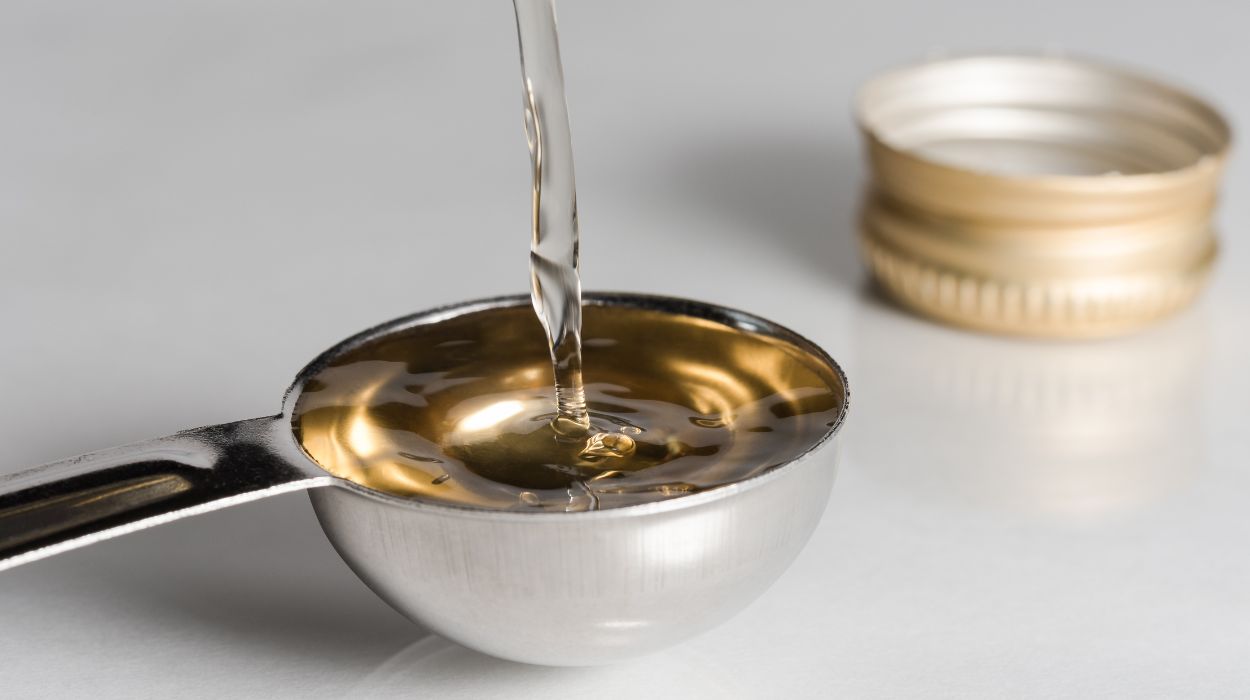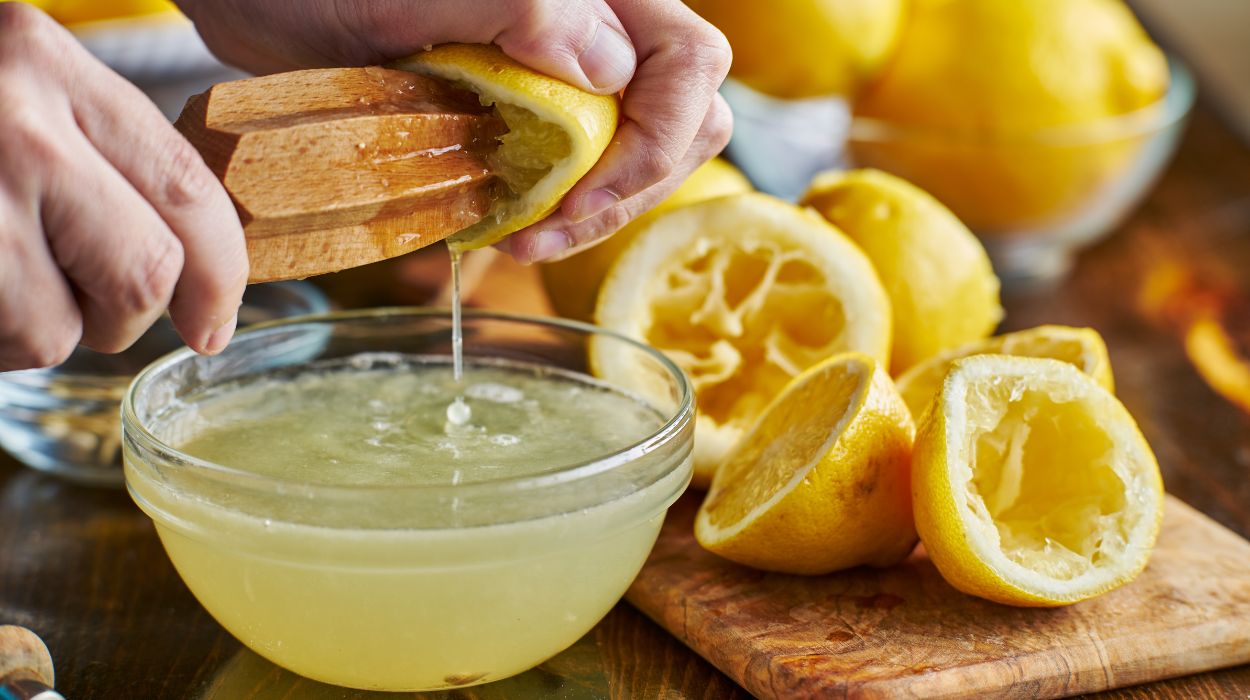Apple cider vinegar is a versatile ingredient with a variety of culinary uses. It has a tangy, slightly sweet flavor that tastes great in soups, salad dressings, and marinades.
Some people claim drinking apple cider vinegar can even help with weight loss.
If you don’t have apple cider vinegar in your cupboard but need to add acidity to your meal, don’t worry. There are plenty of other vinegars you can use as a substitute for apple cider vinegar.
Seven Substitutes For Apple Cider Vinegar
- White wine vinegar.
- Rice wine vinegar.
- Balsamic vinegar.
- Red wine vinegar.
- Champagne vinegar.
- Sherry vinegar.
- Lemon juice.
Best Apple Cider Vinegar Substitutes
Many recipes include apple cider vinegar, as acidity can brighten the flavor of food and offset the richness of other ingredients.
If you’re out of apple cider vinegar, several suitable alternatives exist. White wine vinegar, rice wine vinegar, red wine vinegar, and champagne vinegar can all be used instead of apple cider vinegar. You could also use sherry vinegar or lemon juice.
White Wine Vinegar

White wine vinegar is made from white wine. The alcohol in the wine is converted[1] to acetic acid, which gives vinegar its characteristic taste and odor.
White wine vinegar is often used as a replacement for apple cider vinegar, but they have a different flavor profile. White wine vinegar is more acidic[2] than apple cider vinegar and is less fruity. Add a little citrus juice alongside the white wine vinegar to create a similar flavor to apple cider vinegar.
Rice Wine Vinegar
Rice wine vinegar, or rice vinegar, is produced from fermented rice. The natural sugars in rice are fermented to alcohol[3] using yeast and then converted to acetic acid. Rice vinegar is often used in Asian cuisine and features heavily in Japanese, Chinese, and Korean recipes.
Rice vinegar is an ideal substitute for apple cider vinegar because they’re close in flavor. These two kinds of vinegar have a similar production process, so both have a mild sweetness. However, rice wine vinegar is slightly sweeter than apple cider vinegar.
Make sure you use unseasoned rice vinegar if you’re looking for an apple cider vinegar replacement. Seasoned rice vinegar is flavored with sugar and salt and is typically used in sushi rice and Asian salad dressings. It has a different flavor from regular rice vinegar, which is very different from apple cider vinegar.
Balsamic Vinegar
Balsamic vinegar is made from grapes and has a complex, sweet-sour flavor, making it popular in salad dressings. Balsamic vinegar can also be enjoyed drizzled on bread or in glazes for fruits and desserts. It’s also a rich source of phenolic compounds[4] with antioxidant properties and can help prevent cancer and cardiovascular diseases.
The fruity flavor of balsamic vinegar makes it a good substitute for apple cider vinegar in salad dressing or vinaigrette. However, it has a richer, sweeter profile than apple cider vinegar, so it won’t taste the same in recipes. It may also affect the color of the dish.
If balsamic vinegar doesn’t fit your preference, try white wine, Champagne, or rice vinegar instead.
Red Wine Vinegar
Red wine vinegar is produced in the same way as white wine vinegar, but it’s made from red wine. It has acidity similar[2] to apple cider vinegar, but its flavor is more robust and tangy.
Red wine vinegar is often used in salad dressing, marinades, and sweet-and-sour dishes. It can also be used to add flavor to roasted vegetables. If you’re using red vinegar as a substitute for apple cider vinegar, be aware that it may affect the color of the dish.
Champagne Vinegar
Like white wine vinegar, champagne vinegar is made from white wine. It gets its name from the types of grapes used to make it, which are the same variety as those used in Champagne.[5]
It’s less acidic and has a milder flavor but can still be a good apple cider vinegar alternative. Its light flavor is especially well-suited for dressings, marinades, and vegetable sauces.
Sherry Vinegar
Sherry vinegar is made from sherry wine. After the fermentation process is complete, it’s aged in wooden barrels[6] for at least 6 months. This gives the vinegar a distinct flavor that some describe as nutty with notes of caramel.
Sherry vinegar is an excellent substitute for apple cider vinegar, though it has a more complex flavor. If you’re worried about the acidity level of your food, use slightly less sherry vinegar than apple cider.
Lemon Juice

The citric acid in lemon juice makes it a good substitute for apple cider vinegar. Astringent citrus juices like lemon and lime can brighten the overall taste of your food and add fruity notes to your dish. Lemon has an acidity similar[7] to apple cider vinegar,[2] so you can easily substitute one for the other.
What Is Apple Cider Vinegar?
Apple cider vinegar is made from double-fermented apple juice.[8] Yeast and sugar are added to the juice of crushed apples to start the fermentation process. In the first fermentation stage, the sugar is converted to alcohol; in the second, the alcohol turns to acetic acid.
Apple cider vinegar has a tart, slightly fruity flavor, making it popular in salad dressings, vinaigrettes, soups, marinades, and chutneys. It can also improve the texture[9] and flavor of baked goods.
Uses Of Apple Cider Vinegar
Apple cider vinegar can brighten various savory recipes, including stir-fries, sauces, and stews, dressings, and marinades.
Some baking recipes also include apple cider vinegar as a leavening or raising agent.[10] Its inclusion can also make baked goods more moist, soft, and fluffy.
You may have heard that some people drink apple vinegar for weight loss and other health benefits. Some studies have found that apple cider vinegar could decrease appetite,[11] aid weight loss, and reduce cholesterol levels. You may lose fat by including more apple cider vinegar in your diet.
If you want to use apple cider vinegar for weight loss, try adding it to fruit juice.
You can mix it with orange juice or grapefruit juice, but be aware that the vinegar’s acidity will alter your juice’s taste.
Proponents of the health benefits of apple cider vinegar also claim it can improve gut health. However, there is no firm scientific evidence to back these claims.
If you don’t like the taste of vinegar, you can supplement your diet with apple cider gummies. This is an easy and convenient way to enjoy the health benefits of apple cider vinegar
Conclusion
Lots of recipes call for apple cider vinegar, but if you don’t have any, you can always use a different vinegar. Rice vinegar may be the best substitute for apple cider as it has a slight sweetness that gives it a similar flavor.
Another good alternative is white wine vinegar because it has a neutral flavor that won’t overpower the dish. You can add fruitiness to white wine vinegar with a splash of lemon or lime juice. However, it is highly acidic and slightly sourer than apple cider vinegar.
You can also substitute apple cider vinegar with balsamic vinegar, which is made from grapes and also has a sweet taste. However, balsamic vinegar has a bolder flavor and color that will almost certainly come through in your cooking.
If you don’t want to use vinegar substitutes, you can use citrus juice when a recipe calls for apple cider vinegar.
Frequently Asked Questions
Apple cider vinegar contributes to the final taste and texture of baked goods. It can be crucial in baking as a raising agent, so it’s better to substitute it for another ingredient like white wine vinegar or lemon juice.
Balsamic vinegar and apple cider vinegar are both made from fruits, and both have notes of sweetness. However, balsamic vinegar has a more complex flavor profile than apple cider vinegar. It is less acidic and has a tangier, sweeter taste.
Apple cider vinegar is made from fermented apple juice and has a more sour, tart flavor than regular apple juice. Add a splash of lemon juice or white vinegar to increase the acidity when using apple juice in salad dressing.
 Evidence Based
Evidence Based
